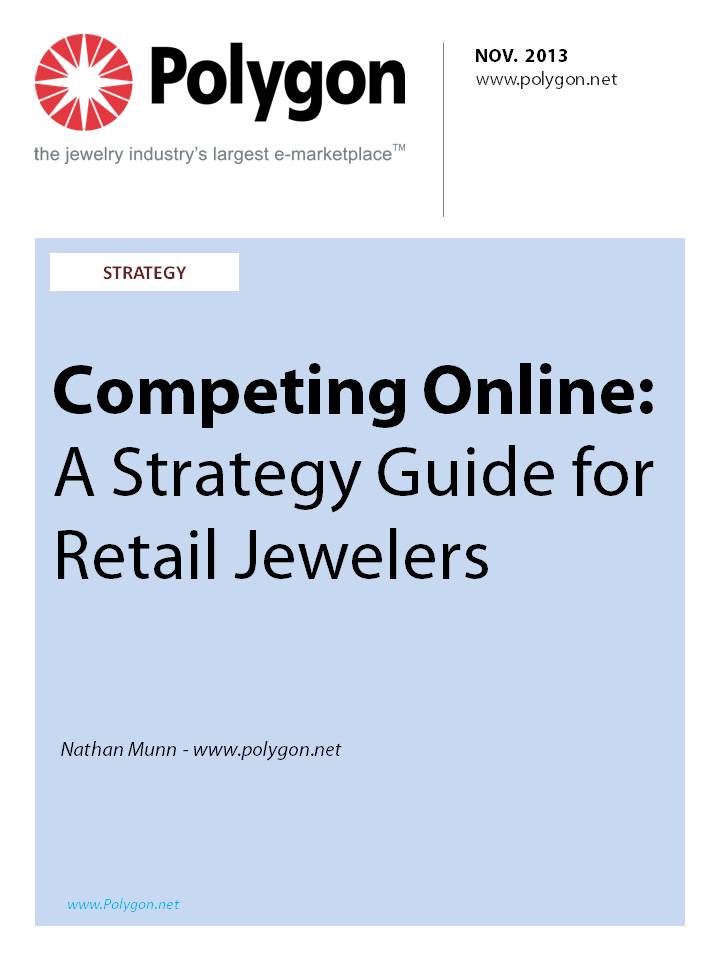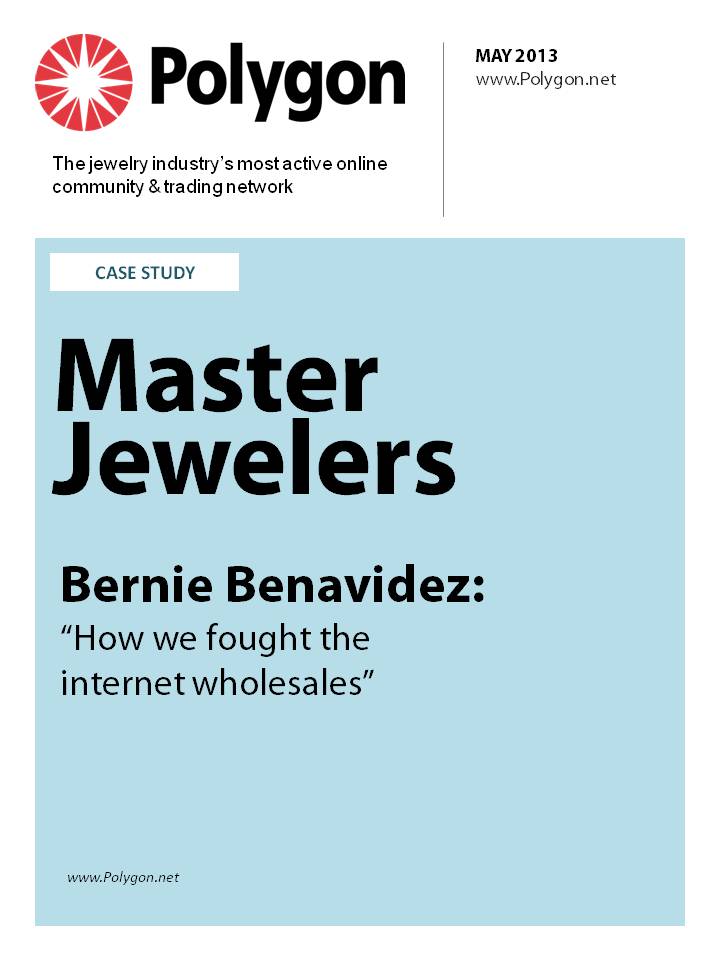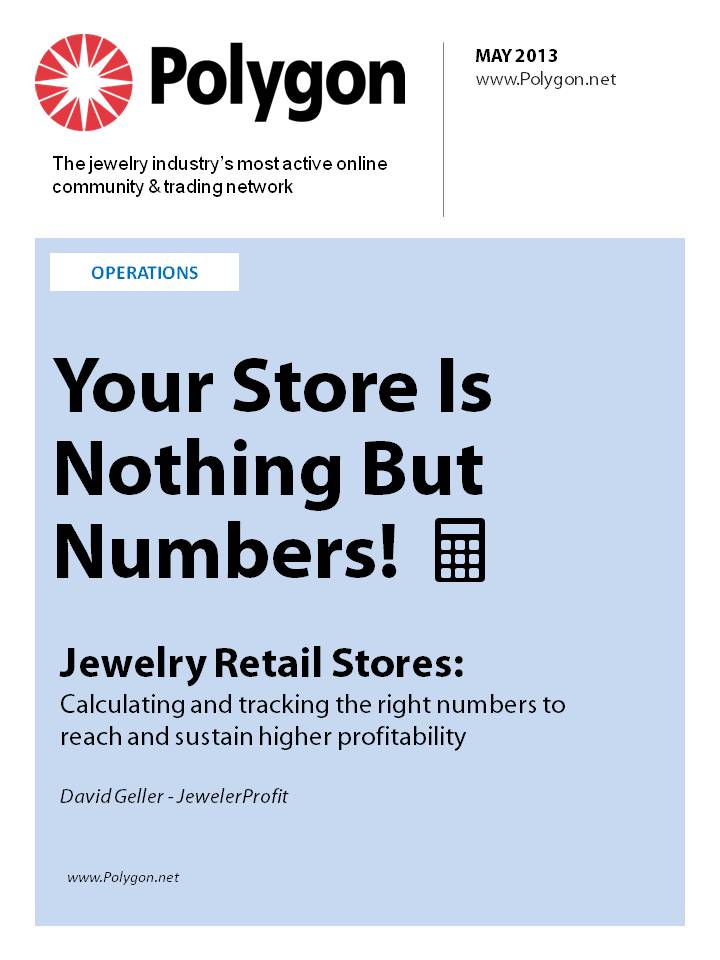Fair Trade Jewelry and Precious Metals: Ethical Sourcing in the Jewelry Industry

It’s no secret that jewelry customers – especially Millennials – are increasingly interested buying in fair trade, sustainable and ethically-sourced jewelry products. Whether driven by a growing sense of social responsibility, such as a desire to improve the working conditions of miners, or concern for the environment, the fact is that today’s jewelry customers are buying far more than a product. They understand that their purchase is the result of a supply chain, and that the provenance of a purchase can range from sustainable and ethical to illegal, exploitative and destructive.
In line with this trend, there are an increasing number of providers of fair trade and ethically sourced jewelry materials, both online and in brick-and-mortar stores. Some wholesalers and retailers were far ahead of the curve: Columbia Gem House, founded in 1976, has been an industry leader in ethical sourcing since the concept was first envisioned.
Beyond CGH, many industry players have made significant steps in promoting sustainable sourcing practices. Companies including Hoover and Strong in the United States have taken the lead in adopting strong ethical sourcing policies for precious metals, becoming innovators of the sustainable supply chain movement as a result.
In this article we’ll look at the state of ethical sourcing in the jewelry industry and conduct an in-depth interview with Torry Hoover of Hoover and Strong, to find out how and why he chose to become a leader in sustainable sourcing.
Fairmined Metals
The Alliance for Responsible Mining (ARM) created the Fairmined Initiative, a 3rd party certification system that allows small-scale mining communities around the world to participate in an auditing process that ensures their operations meet internationally respected standards for environmental sustainability, safer working conditions for miners and community development.
So far, beyond North America and Europe, individual mining communities in Bolivia, Colombia, Peru and Mongolia have integrated Fairmined practices and standards, with outstanding results: Farmers in Iquira, an agricultural cooperative in the southwest of Colombia, transitioned from coffee farming to artisanal gold mining at the turn of the millennium. To protect their community from the potentially destructive effects of unregulated mining, members of the cooperative took it upon themselves to implement the social development and environmentally-sound practices promoted by the Fairmined process.
In 2015, the Nobel Prize was crafted from Fairmined gold by the Norwegian Mint for the first time, using gold from the Iquiria cooperative.
Ethically Sourced Gemstones
According to figures quoted by JCK, the colored gemstone market is highly fragmented, with around 95 percent of the market supply provided by small producers; this makes it next to impossible to determine the source of many gemstones. However, some companies are operating in a way that improves transparency in the market.
True North Gems, which owns and operates gemstone mines in Greenland, has put in place a comprehensive sustainability policy that underpins all of the company’s operations. According to a statement on their site, the policy “ensures environmental protection, social inclusion and economic benefits are managed to the maximum benefit of both the Company and the local people of Greenland.”
Ethical Metalsmiths, a consortium of jewelers working to lead the industry in the direction of ethical sourcing and sustainability, has a membership roster that includes several providers of ethically-sourced gemstones.
Sulusso, a designer of custom bridal and designer jewelry, uses only “eco-friendly, ethically sourced, fair-trade and responsible materials and manufacturing” in their creations. The company sources ethical gemstones including alexandrite, amethyst, aquamarine, citrine, diamond, emerald, garnet, moissanite, peridot, ruby, sapphire, tanzanite, topaz, tourmaline and zultanite. HK Jewelry, based in the UK, also source responsibly sourced gems.
Interview with Torry Hoover
Hoover and Strong is a U.S.-based wholesaler of recycled and ethically-sourced precious metals. They also sell certified conflict-free and eco-friendly products with their Harmony line of jewelry products.
Polygon: What first inspired you to begin selling fairmined precious metals?
Torry Hoover: The inspiration came about ten years ago, when we started our whole journey into the recycled, fair-mined and fair-trade sector, which led to us being the first ones in the U.S. to offer recycled metals to customers. Around 2008, some jewelers on the west coast – who tend to be more environmentally conscious – asked us to start offering recycled gold, platinum and silver, which we did. We then got the product certified about a year later, and that’s what really started the trend. Now, it seems like everybody is becoming certified for recycled metals.
Around that time, during a summit called the Madison Dialogue in D.C. where they were talking about fair-mined gold (but Fairmined is a brand, so we’ll call it artisanal-mined gold), I learned that there are something like ten million artisanal miners around the world, which includes everything from basically a person with a shovel up to small-scale industrial mining - operations that typically cap out at around 30 or 40 miners.
What really appealed to me instantly were the issues that artisanal miners face with mercury. Many artisanal do not use environmentally-safe ways to separate the gold from the ore; they use methods as crude as putting the ore in a handkerchief and adding mercury, causing the gold to fuse with the mercury. You can imagine what that does to a miner who is using just their bare hands. Mercury poisoning is a brutal way to die.
Some use safer methods, which still aren’t that great – methods like cyanide, bleaching and others. So the idea that we could improve the environmental aspect of small-scale mining by organizing artisanal miners was one part of our inspiration, and our second goal was to provide the miners with safer ways to dispose of the mercury and give them alternatives to using it.
Over the last thousand years or so that these artisanal miners have been doing this, they typically would bring their gold down to the local buyer, who would give them fifty percent of the market rate - they have historically gotten much lower than market value for their gold. We figured that if there was a way that we could improve that, these miners could benefit instantly from an improved way of life.
I thought, “What a perfect way to give back”. So I squirreled that idea away and started the journey into recycling; we got into recycled diamonds, which we’re doing now. Ethical Metalsmiths came down to see us a year ago and said they would like to do a pilot program with a mine in Peru, where they would buy the gold at a premium, over market value. I said, “Ok, I’m in, but I’m very leery – who’s going to buy gold over-market?” They gathered orders and we ordered the material, and it took a couple months for it to arrive. Again, I thought “Who’s going to wait two months for gold?” You know, to pay up front, then wait two months and add a premium…
Fortunately, they proved me wrong. There was definitely interest in it, and I had said that if you can show me there’s a market for it, then we would buy some of this gold and sell it to interested jewelers.
So that’s what we’ve done. We order material now on our own, however our single biggest business issue is consistency of delivery. I’m trying to get more than one or two mines in our network, because sometimes a mine will have the material, sometimes they won’t, and you have to wait a month or two - and jewelers don’t want to wait. So now our focus is to expand the miner base.

The Harmony line of jewelry products is eco-friendly and conflict-free.
Our VP of mill products, Stewart Grice, recently came back from a trip to Peru. I knew these people were poor. But when you see the pictures… You have no idea. It’s one of the driest places on Earth, and it’s up about 5000 feet. I was so amazed by these people. They go down into the shaft and the gold is hand-dug… Stewart went down into the mine and said it was just unbelievable.
Their whole way of life is elevated greatly by the ethical sourcing initiative. The average Peruvian miner can now earn about three times what they made before. The whole village is getting a premium now: every year, they collectively receive an average of 75 to 100,000 dollars in benefit from this approach.
Four or five years ago, the artisanal miners were literally mining the gold by hand, 5000 feet up, bringing it down on their backs to a crusher who was ripping them off. So a few years ago, the miners formed an association and they said “We’re going to buy the equipment and do it ourselves.” After the first year of doing that they brought electricity to their village, a village of about 3000 people.
That’s incredible.
Yeah. We’re not talking glamorous things here; we’re talking as basic as you can get. In their second year, they had the option to bring either water or internet to their village. Which one do you think they picked?
I’m guessing, in this day and age, the internet.
The internet! They said “We’ll continue to bring water up the mountain,” and instead chose to get the internet so they can communicate with the rest of the world; water came later. Now, they have a soccer field where their kids can play. And the miners get wood houses, instead of tarp houses.
It’s awesome. You see the pictures and you think to yourself, “Wow.” This is what it’s about.
And this is just one mine. There are many people involved in the artisanal mining effort: Fairmined and Fair Trade are two big organizations. Fair Trade is much more advanced in Europe, but they’re not selling any gold here, so we’re working with them to try and bring the certification to the U.S. Ultimately though, it’s the people who buy the gold and who visit the mines to try and help them become certified who are the ones that are really making sustainable sourcing a reality.
Do you see a lot of interest among your customers for ethically sourced metals?
Definitely. The beautiful thing about recycling and environmentally sourced metals is that it’s not going away. The trend is only getting stronger. It’s not people my age, 50-plus, who are pushing this forward – it’s my kids, the 20-year olds who have grown up with recycling. As they become buyers of jewelry, they are the ones that go into a store and say “Where does this metal come from?” There’s been a lot written about Millennials, about how they don’t just buy a product, that they buy the story of the product. So now the consumer has a choice: they can buy gold and not know where it came from, or they can buy gold where they can tell the story about the fair mining process. The price difference in the end isn’t that much; we’re talking a fifteen-percent premium over the spot market.
That’s a small price to pay considering the impact that it has on the lives of people at the top of the supply chain.
You got it.
What do you think the future holds for ethical sourcing – do you think the industry will move toward more certifications, process improvements, co-operatives…?
We are still at the beginning now of sustainably sourced material. When you think about the fact that there are probably only ten, at most, mines around the world that are certified Fairmined - there’s a long way to go. The next venue is Africa. There are so many companies that could be certified, many more in South America that could be certified. Imagine hundreds of mines all operating according to these principles; that would be meaningful.
In this shift towards ethical sourcing that’s happening, on one hand you’ve got the government approach – for example, the Kimberly Process for diamonds – that focuses on creating new regulatory initiatives; and then you’ve got suppliers like Hoover and Strong that are approaching it from a business perspective, pushing the business itself in a whole new direction. Which side do you think is the most important in terms of creating real change in a meaningful way?
(Laughs) You know the answer to that! But I’ll answer anyways.
In terms of the Kimberly Process – many, many people have critiqued it, and rightly so. In my opinion, government is at its best when it comes to regulation. Government is not good at running businesses, but it is good at is stopping cheaters and enforcing laws. The intent of the Kimberly Process was good: the ability to trace any gem back to its mine of origin would be the ultimate achievement, but the thing is, it has to happen for a business reason. Recycled gold, when we first started it, many people said “Forget it, it can’t be done”. And we showed them that it could be done. We were literally the first ones to do it.
So the answer to your question is that change has to be profitable, and it has to be driven by private enterprise.
This interview has been edited and condensed for clarity and style.
Nathan Munn | Polygon.net







